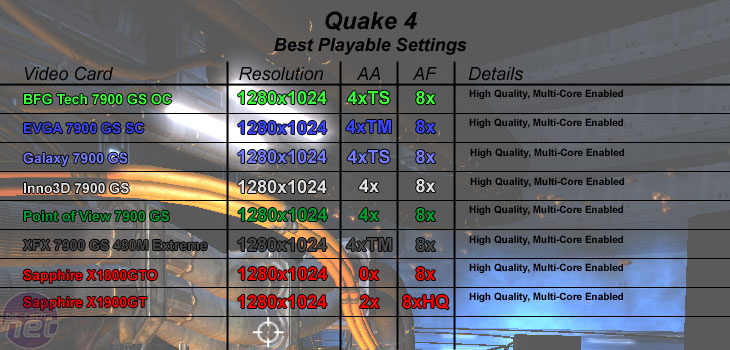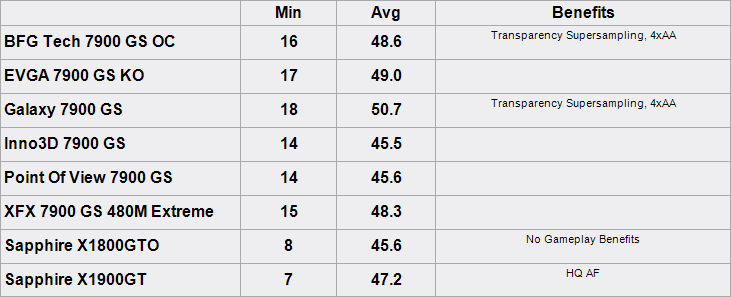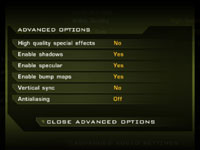GeForce 7900 GS Group Test
September 21, 2006 | 11:03

Quake 4
Publisher: ActivisionWe used the full retail version of Quake 4 patched to version 1.3.0. It is the fourth game in the Quake series, based on the technically sound Doom 3 engine. However, unlike Doom 3, we found that the game benefits from at least 2x anti-aliasing, and the experience with anti-aliasing at a slightly lower resolution was better than increasing the resolution with no AA applied.
Both anti-aliasing and anisotropic filtering were controlled from inside the game. When you select "High Quality" mode, 4xAF is automatically enabled, and when the "Ultra Quality" mode is enabled, 8xAF is automatically applied to the scene.
We did a manual run through from a five minute section of the Nexus Hub Tunnels level and found that a minimum of 15 frames per second and an average of 45-50 frames per second in our test section was deemed to be playable across the rest of the title.


The BFG Tech and Galaxy GeForce 7900 GS cards were clearly the fastest of the group of cards tested, with the EVGA and XFX cards following closely behind. The difference between these two pairs of cards was the difference between transparency supersampling and transparency multisampling anti-aliasing, or slightly smoother frame rates at the same quality settings.
The added memory bandwidth on Galaxy's card seemed to help in this title, as we saw an increase of 2 frames per second on both average and more importantly the minimum frame rate. Even the Inno3D and Point Of View GeForce 7900 GS cards were faster than Sapphire's Radeon X1900GT in this scenario.
High quality anisotropic filtering was a nice touch for the Sapphire Radeon X1900GT, but it didn't make quite as much of a difference as it does in games that really suffer from harsh texture filtering optimisations - Battlefield 2 springs to mind on that front. Textures were sharper, but they weren't so much better looking that you'd take the slightly better texture filtering quality over twice as much anti-aliasing and in some cases, transparency anti-aliasing too.

MSI MPG Velox 100R Chassis Review
October 14 2021 | 15:04









Want to comment? Please log in.